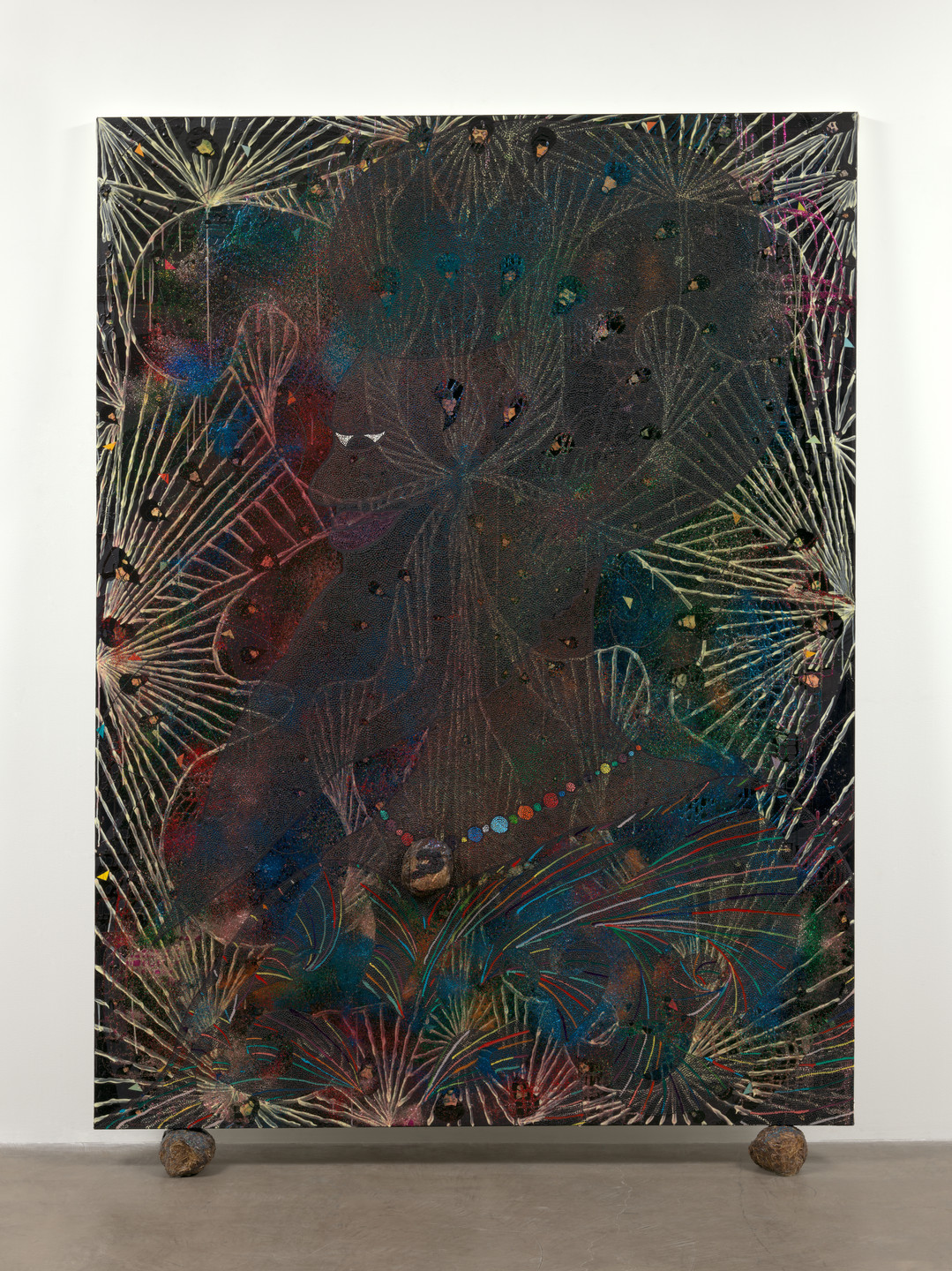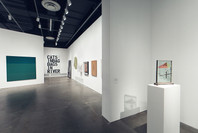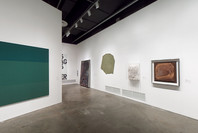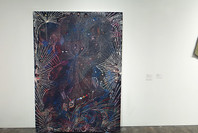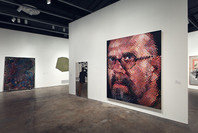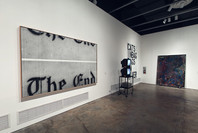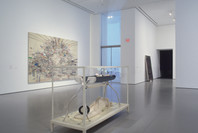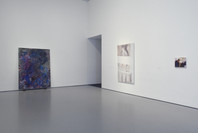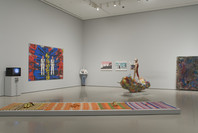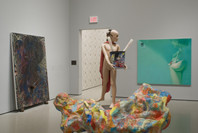Ofili here employs African–inspired motifs, glitter, collaged cutouts from popular magazines, and, most notoriously, elephant dung. The latter material has associations for him with African tribal culture, but its unusual use in his paintings has proven an affront to some, particularly in works that confront racial and religious stereotypes. Such notoriety might have obscured Ofili's primary involvement with hip–hop culture as a resource for his art at this time. He has stated, "I'm trying to make paintings that make you hear them, rather than see them."
Gallery label from Multiplex: Directions in Art, 1970 to Now, November 21, 2007-July 28, 2008.
Ofili's intensely worked, vibrant paintings combine a wide range of referents, from African burlesque to Western popular culture. Using a cut-and-mix technique and repetitive patterning, the works evoke the anarchic rhythm of hip–hop lyrics and performance. Prince amongst Thieves features the caricatured yet regal profile of a bemused man of African descent, set against a densely ornate background dotted with countless minute collages of the heads of illustrious black figures. The work's shimmering, psychedelic surface of sprayed pigment, synthetic polymer paint, glitter, elephant dung, and splashes of translucent resin produces a ritualistic effect that parodies stereotypes of black culture while celebrating difference. The lacquered clumps of elephant dung on which the canvas rests have become a signature for Ofili, and they confer on the painting a sculptural and perhaps even totemic presence, invoking African tribal art, with which Ofili (who is of Nigerian descent) became familiar during a visit to Zimbabwe, in 1992.
The artist uses elephant droppings for its traditional associations but procures it from the London Zoo, thereby probing his cultural heritage and urban experience in ways that confound identity typecasting. Ofili's mix of hybrid sources culled from popular magazines, music, folk art, and the tough streets around his Kings Cross studio, in London, epitomizes a new form of counterculture that subtly reworks Western perceptions of blackness.
Prince amongst Thieves. 1999
Publication excerpt from The Museum of Modern Art, MoMA Highlights, New York: The Museum of Modern Art, revised 2004, originally published 1999, p. 370.
In a nocturnal scene sparkling with phosphorescent color, the bust of a man looms like a dark, expanding, hallucinogenic vision. The outsized, extravagant figure, overshadowing a gang of tiny faces cut from magazines, exists in a zone of contradiction. Rouged, glittering, bejeweled, and flaunting a pharaoh beard and afro hairstyle, this inner-city aristocrat, prince, tribal elder, or hip-hop icon is both noble and base, persuasive and blatantly stereotypical. Elephant dung, the artist's signature material (procured from the London Zoo) forms ornaments of the prince’s costume, and also the two round pedestals on which the painting rests.
Ofili's techniques and his aesthetic references are layered and culturally varied. In this painting he combines collage, paint, organic matter, and glitter, and pushes the work toward sculpture by resting it on pedestals close to the ground and leaning it against the wall. The myriad dots on the surface of the canvas hark back to the cave paintings the artist observed on a trip to Zimbabwe. Op and Psychedelic art and the Pattern and Decoration movement of the 1970s inform the work, as well as ancient African art, modern Nigerian art (particularly the Oshogbo school, with its fantastic creatures and mythologies), and, above all, contemporary hip-hop culture.
Publication excerpt from The Museum of Modern Art, MoMA Highlights since 1980, New York: The Museum of Modern Art, p. 184.
